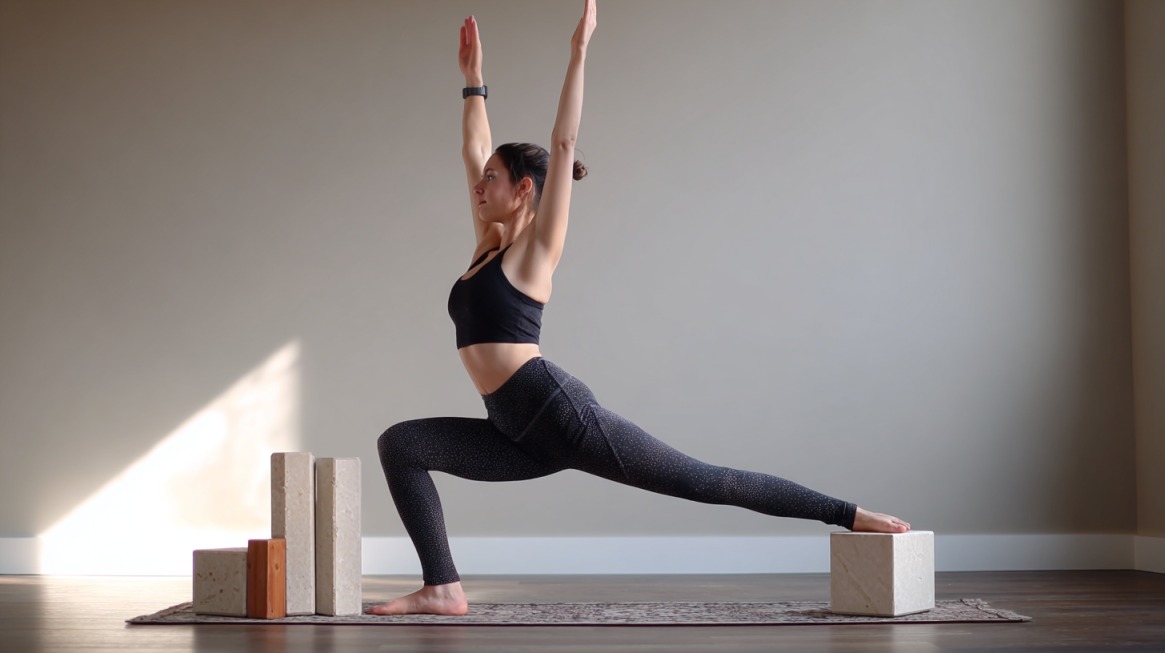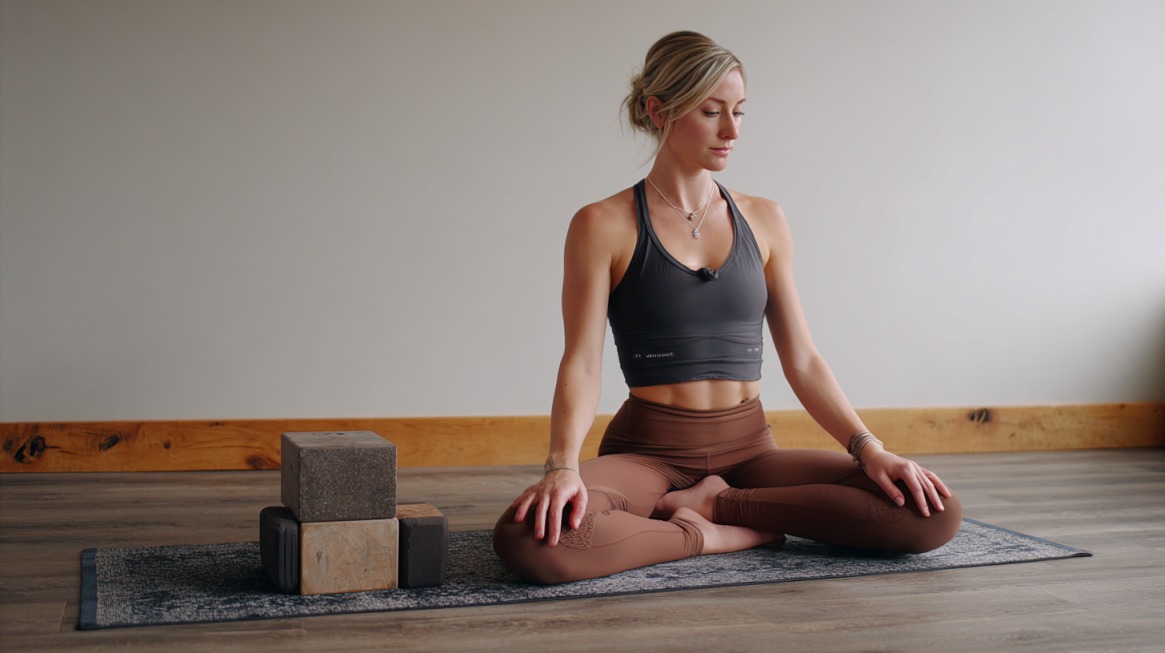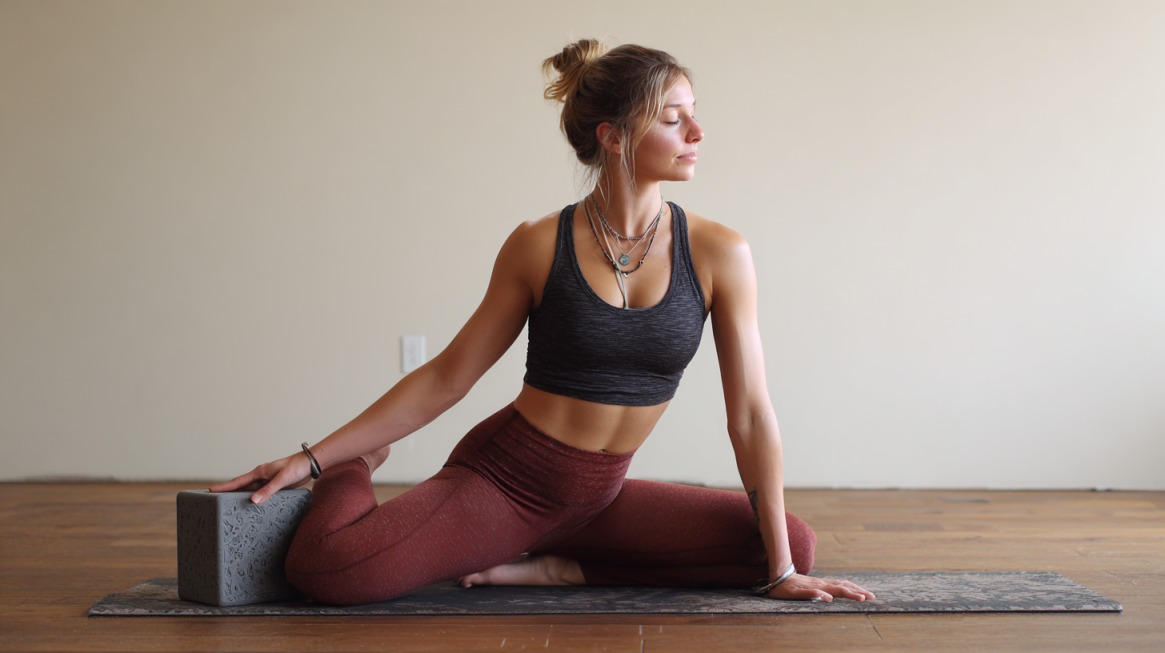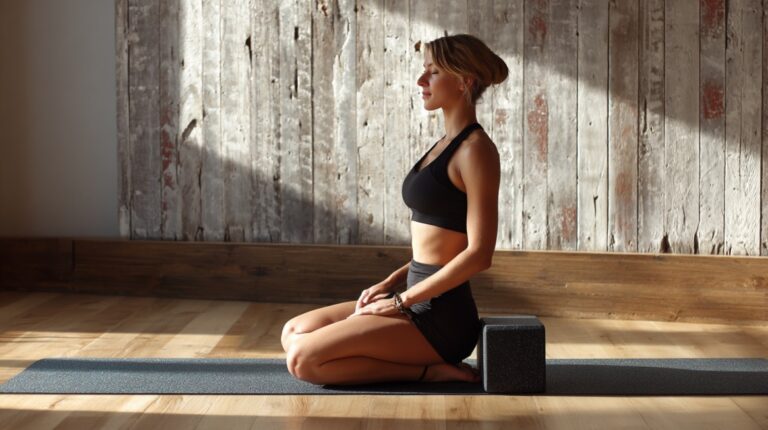Yoga blocks have become an essential tool for practitioners at all levels. These simple props provide support, extend reach, and add resistance, making them valuable for building strength, increasing flexibility, and maintaining proper form.
Far from being reserved for beginners, they serve as companions throughout all stages of practice.
- They support the body in challenging poses
- Allow safe stretching without strain
- Enhance strength-building exercises by adding an extra element of resistance
Without further ado, let us begin.
Foundational Techniques for Using Yoga Blocks
Working with yoga blocks begins with learning the basics of placement and orientation. Understanding how to position blocks correctly ensures safe alignment and prevents strain while practicing.
In this stage, attention is given to both the physical support they provide and the challenge they can create when used intentionally.

Placement Guidelines
Blocks can be adapted to suit a variety of needs. Their versatility lies in how they can be positioned and oriented to provide different levels of height and support.
Practitioners should learn to experiment with different placements to discover what works best for their body.
- Under the hands in standing or seated poses to extend reach
- Under the feet for added height or stability
- Beneath the sacrum to support restorative postures
- Between the thighs to encourage engagement of inner leg muscles
- Between hands or legs for resistance and strength-building
Height can also be modified by turning the block:
- Flat placement for the lowest height
- Upright placement for the highest lift
- Long side placement for a balanced middle level
Mastering these orientations allows progression without pushing the body into unsafe positions.
When to Use for Support vs. Challenge
Yoga blocks are not just about assistance; they can also serve as tools for resistance and intensity. Knowing when to rely on them for support and when to add challenge makes practice more effective.
Blocks under the hands during a forward fold reduce the need for excessive flexibility and protect the hamstrings. Blocks under the sacrum during bridge pose transform a strenuous backbend into a calming restorative posture.
Holding a block in the hand during side plank threads increases resistance. Pressing a block between thighs in boat pose or plank forces core engagement and alignment control.
By distinguishing supportive use from resistance training, practitioners gain more control over how their sessions feel and progress.
Yoga Blocks for Beginners

New practitioners often face limitations in flexibility, balance, or strength. Yoga blocks provide a safe entry point into poses that might otherwise feel out of reach.
Using props in early stages reduces the risk of injury while also building confidence.
To make it practical, here are some common beginner-friendly poses where blocks play an essential role:
| Pose | Block Placement | Benefit |
|---|---|---|
| Standing Forward Fold | Blocks under hands | Shortens distance to floor, releases hamstring strain |
| Half Splits | Blocks under hands | Stabilizes spine, prevents overstretching |
| Supported Bridge | Block under sacrum | Provides grounding, encourages relaxation |
| Warrior III | Blocks under hands | Creates steady base for balance |
| Seated Forward Fold | Block beyond feet or under knees | Extends reach, relieves tight hamstrings |
Beginners who use blocks quickly discover that poses feel more approachable and less intimidating. Proper alignment is easier to maintain, which helps build solid foundations for advancing into stronger or more complex variations.
Strength-Building Exercises Using Blocks
Yoga blocks can transform traditional postures into strength-based drills. Adding them into regular sessions introduces new resistance, making the body work harder and activating muscles that might otherwise stay disengaged.
- Boat to Low Boat – squeezing a block between thighs increases inner thigh activation while maintaining core control
- Plank Pose – a block between thighs helps prevent hips from dropping, promoting stronger abdominal engagement
- Side Plank Threads – passing a block through the body intensifies oblique activation and challenges shoulder stability
- Block Switches or Leg Lifts – moving a block between hands and feet adds coordination while strengthening the core
- Chair Pose – pressing a block between thighs enhances leg activation, while one under heels supports proper ankle mobility
Through these exercises, yoga blocks evolve into resistance training tools rather than just support props. They encourage better muscle awareness and greater strength development within a familiar yoga practice.
Stretching & Flexibility Support

Blocks are invaluable for anyone working to improve flexibility. By bringing the ground closer or supporting sensitive areas, they make stretching safer and more effective.
Muscles gradually release tension without forcing movement. Two areas where blocks are especially useful include hamstrings and hips, as well as backbends.
For Hamstrings & Hips
Hamstrings and hips often limit range of motion in forward folds and seated poses. Blocks help by shortening the distance to the ground or providing cushioning where needed.
- Half Splits and Pyramid Pose – placing blocks under the hands allows the spine to stay long while stretching hamstrings without strain.
- Reclined Bound Angle – blocks under knees or feet transform the pose into a restorative posture, easing tension in the hips.
- Butterfly Pose – blocks under knees or even under the forehead reduce pressure and encourage gentle hip opening.
By using blocks in these positions, practitioners can stay longer in the stretch and allow muscles to release naturally, which is safer and more effective.
For Backbends
Backbends can feel intimidating for many practitioners. Blocks make these postures more accessible while still allowing the body to enjoy the benefits of opening the chest and spine.
- Supported Bridge or Fish Pose – blocks placed under the back or chest create gentle elevation and reduce effort.
- Camel Pose – using blocks under the hands or thighs lowers the intensity and makes the stretch more manageable.
- Upward Dog or Cobra – blocks under the hands provide lift, reducing compression in the lower back and supporting proper alignment.
Blocks encourage safe progression in backbends, letting the body open without forcing the spine into unhealthy shapes.
Practicing with these supports leads to steady mobility improvement while reducing the risk of overstretching or discomfort.
Balance & Stability Enhancements
@sasha.yogasha Improve balance & stability Relieves stress & anxiety Strengthen your legs, core, & shoulders #yoga #yogagirl #flexibility #halfmoonpose #balance #yogapose ♬ Beautiful – Nyashinski
Balance work in yoga is as much about focus as it is about physical ability.
Blocks add variety to these postures by either giving grounding support or creating instability that engages stabilizing muscles. Both approaches help strengthen the core and sharpen coordination.
- Tree Pose – standing on a block increases the challenge for the ankle and forces the core to stabilize.
- Half Moon – placing a block under the supporting hand raises the floor and helps maintain alignment while balancing.
- Chair Pose with Blocks – positioning blocks under heels or between thighs improves grounding and adds muscle activation.
- Standing Figure Four – resting a foot or fingertips on a block enhances balance while reducing unnecessary strain on the hips.
Training with blocks in balance-based poses improves stability, posture, and concentration.
Over time, practitioners gain not only physical strength but also the confidence to hold more challenging positions without fear of losing balance.
Benefits of Using Yoga Blocks
Yoga blocks provide more than a simple lift or extension of reach. They create a supportive environment that allows practitioners to move safely while gradually increasing strength and flexibility.
Their adaptability ensures that beginners, experienced practitioners, and even athletes recovering from injury can all benefit in distinct ways.
With proper use, blocks turn challenging postures into accessible experiences and transform basic movements into powerful strength-builders.
Several advantages arise from consistent integration of yoga blocks into practice:
| Benefit | Description | Examples of Use | Primary Focus Area |
|---|---|---|---|
| Improved alignment and posture | Brings ground closer for safe form. | Forward Fold with blocks under hands | Spine & hamstrings |
| Enhanced flexibility and mobility | Supports gradual stretching. | Half Splits with blocks under hands | Hamstrings & hips |
| Support during recovery or injury | Allows safe movement without strain. | Supported Bridge with block under sacrum | Lower back & pelvis |
| Added challenge and resistance | Engages muscles through pressure. | Boat Pose with block between thighs | Core & inner thighs |
| Greater balance and stability | Trains core with added support or instability. | Tree Pose standing on a block | Ankles & core |
| Reduced risk of injury | Prevents overstretching and misalignment. | Pyramid Pose with blocks under hands | Knees & hamstrings |
| Accessibility for all body types | Helps different body proportions. | Seated Forward Fold with block past feet | Legs & shoulders |
| Increased endurance | Builds stamina with resistance. | Chair Pose with block between thighs | Quadriceps & glutes |
| Deeper relaxation in restorative yoga | Provides gentle support for longer holds. | Reclined Bound Angle with blocks under knees | Hips & inner thighs |
| Confidence building | Makes poses feel more approachable. | Warrior III with blocks under hands | Balance & overall alignment |
The Bottom Line
Yoga blocks offer flexibility, support, and strength all in one simple tool.
Their versatility allows practitioners to adapt practice to personal needs, whether recovering, building strength, or refining alignment.
Experimentation with different placements and exercises ensures continued growth in practice.
Starting with guided classes or online tutorials provides a safe structure while gradually unlocking the full potential of yoga blocks.

